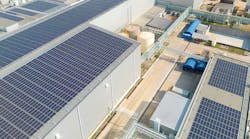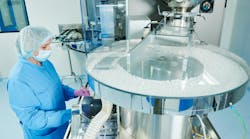The $2 trillion pharma industry is supported by a vast ecosystem of suppliers. Both drugmakers and suppliers alike work in a capital-intensive environment. It’s a complex supply chain that’s challenged by real-world economics, but also by regulatory mandates, a constant flow of new products, and yes, pandemics.
For these reasons, for pharma manufacturers and allied businesses, access to capital is mission critical. Unfortunately, a sell-off in equities, rise in interest rates, and skittish debt market due to recessionary fears have made capital scarcer. But sale leaseback transactions can fill the void.
The mechanics
A sale leaseback transaction involves selling an underlying property, and then simultaneously leasing it back from the new owner. The long-term leases that are negotiated with the sale typically run 15 to 20 years with renewal options — a term long enough to ensure the business maintains control over critical manufacturing operations.
The sale leaseback allows a manufacturer to unlock the capital tied up in real estate and redeploy it to mission critical areas of the business, making it an effective capital allocation tool.
And while real estate fundamentals play a role in sale leasebacks, the key drivers of value are the credit of the tenant, growth prospects and the lease structure itself. The flexibility in structuring lease terms makes the sale leaseback surprisingly agile.
There are several levers to pull in a sale leaseback, including lease length, base rent, as well as frequency and percentage of rent increases. Further, negotiating change of control provisions that do not hinder a future business exit is crucial.
Leasebacks in pharma
Sale leasebacks are suitable for pharma manufacturers because many of them own their facilities. Freed-up capital from sale leasebacks is commonly used by operators to fund new equipment, production lines and internal growth initiatives, as well as pay down debt, lower cost of capital and help fund acquisitions.
Here are some examples:
- Inhaled insulin maker, MannKind, raised $102 million in 2021 by selling and leasing back its 263,900-square-foot plant in Danbury, Connecticut to fund the growth of its business.
- In October of 2022, Ionis Pharmaceuticals sold its 246,000-square-foot corporate headquarters and life science campus in Carlsbad, California for $258.4 million to fund near-term capital needs. They are leasing back the property from the new owner of the facility, Toronto-based Oxford Properties Group, for a minimum of 15 years.
Not just in top tier markets
In a conventional real estate transaction, location is a major factor dictating the valuation of a property, suggesting that pricing is often better in larger metro areas such as Los Angeles, Manhattan and Chicago. While real estate fundamentals apply in sale leasebacks, there are considerations that set it apart from a traditional commercial property sale.
A sale leaseback investor (buyer) values a safe and steady stream of income. Hence, the health of the underlying business, as well as the health of its credit, are important factors that go into the valuation of the property and in some cases, may outweigh the location of the property. This unique dynamic allows manufacturers to obtain attractive pricing and execution even in tertiary or remote markets where pharma manufacturers are often situated.
A strong environment
Sale leasebacks saw a near-record year in 2021 in both deal and transaction volume. Nearly 800 sale leasebacks across all industries were closed, totaling $24.3 billion. And despite the challenges we saw in the sale leaseback market in 2022, such as increases in interest rates, inflation headlines, decline in M&A activity and overall ‘risk-off’ environment, the third quarter of 2022 came in with 237 discrete transactions — the strongest performance by deal count in recent history.
For companies in the competitive pharmaceutical market that need capital to grow — or simply to keep pace with change — sale leasebacks merit consideration. In any market, capital can be challenging to source. But with a sale leaseback transaction, the capital your business needs might be right under your feet.






